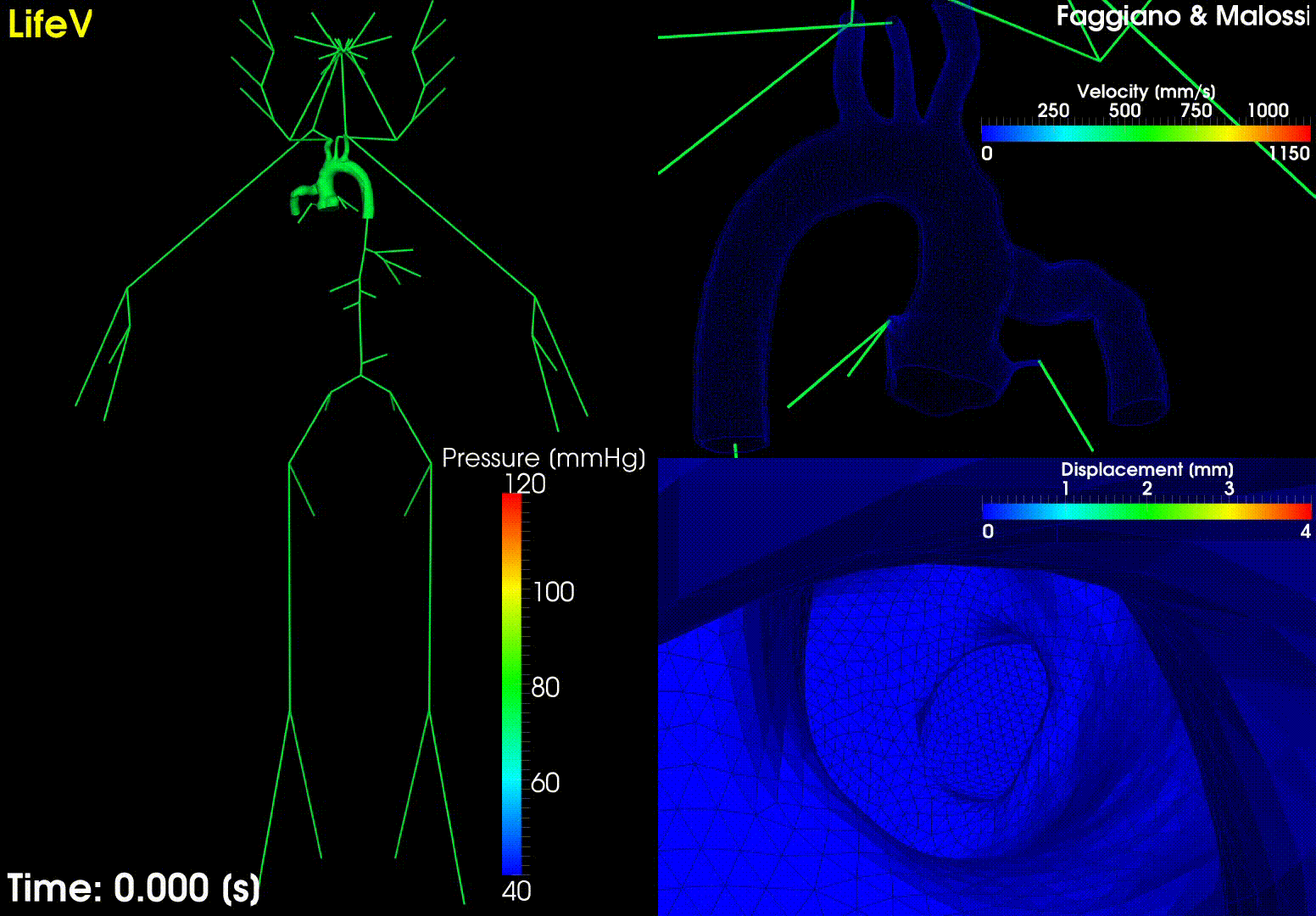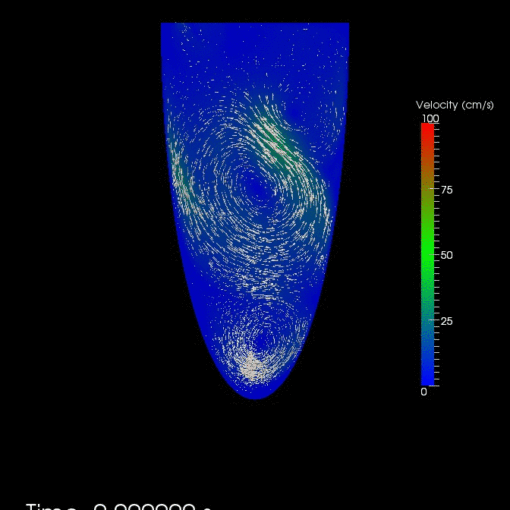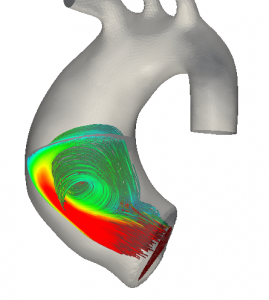Nowadays ventricular assist devices (VAD) play an important role in the treatment of terminal heart failure. While the devices themselves have been widely studied there are no studies of patient-specific numerical simulation in this context. This could be explained by the fact that the presence of the device induces metallic artifacts and noise in the acquired images so that conventional segmentation techniques fail.
The aim of our research is to propose a robust framework for the study of VAD in patient-specific geometries which allows to simulate different stages of heart failure and different rotational speeds of the device.
Publications:
- Jean Bonnemain, A. Cristiano I. Malossi, Matteo Lesinigo, Simone Deparis, Alfio Quarteroni, Ludwig K. von Segesser, Numerical simulation of left ventricular assist device implantations: Comparing the ascending and the descending aorta cannulations, Medical Engineering & Physics 35 (2013) 1465–1475.
- J. Bonnemain, E. Faggiano, S. Deparis, A. Quarteroni, and L. von Segesser. Segmentation and grid generation for numerical simulations of vad connections with patient-specific data. INTERNATIONAL JOURNAL OF ARTIFICIAL ORGANS Volume: 34 Issue: 8 Special Issue: SI Pages: 671-671, 2011.
- Jean Bonnemain, Elena Faggiano, Alfio Quarteroni, Simone Deparis, A Patient-Specific Framework for the Analysis of the Haemodynamics in Patients with Ventricular Assist Device, MOX–Report No. 11/2012.
- Scardulla S., Pasta S., D’Acquisto L., Sciacca S., Agnese V., Vergara C., Quarteroni A., Clemenza F., Bellavia D., Pilato M., Shear Stress Alterations in the Celiac Trunk of Patients with Continuous-Flow Left Ventricular Assist Device by In-Silico and In-Vitro Flow Analysis. MOX Report n. 48/2016




